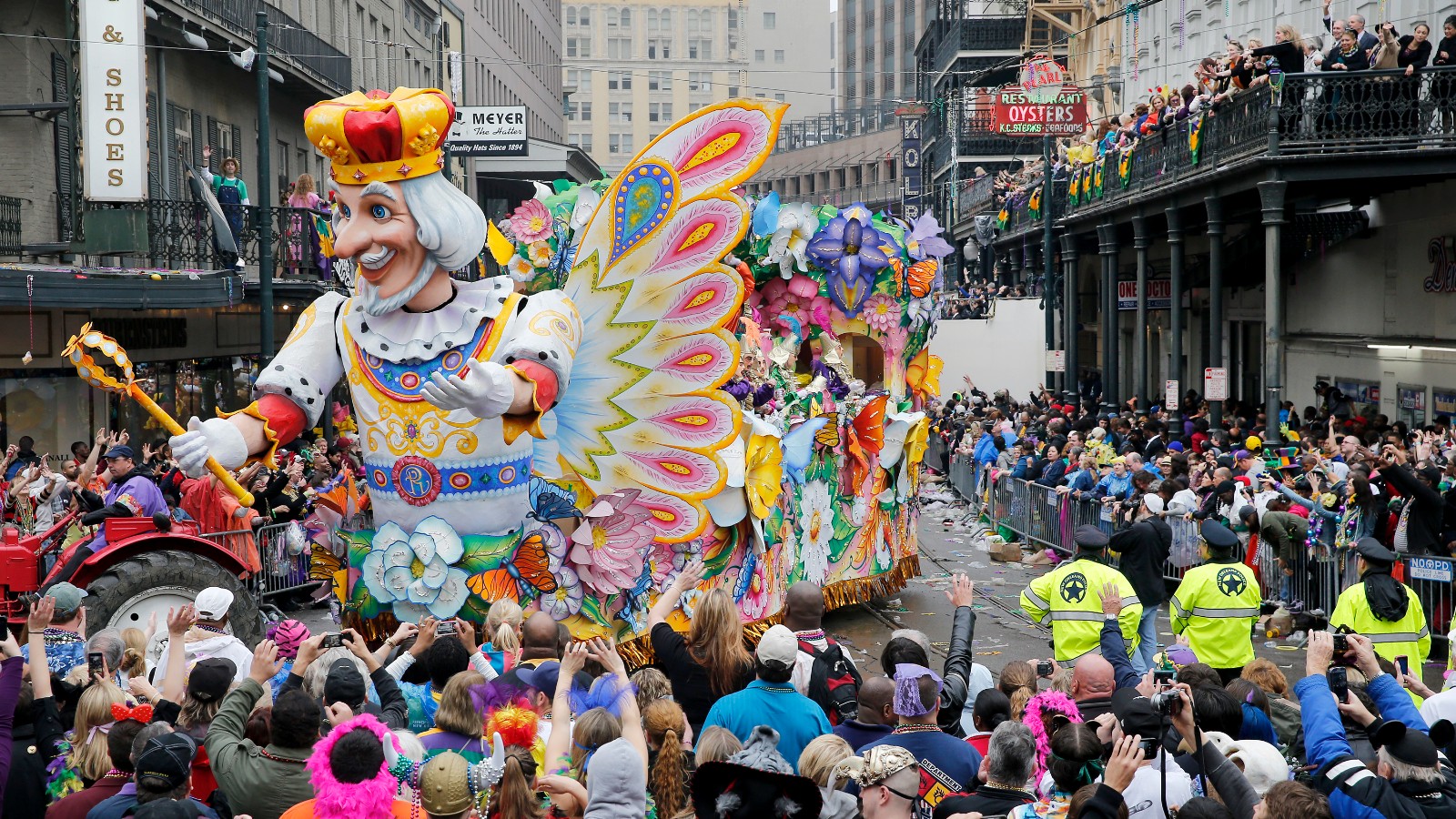
March 5, 2019 - Mardi Gras (Fat Tuesday).
January 6 - Carnival season celebrations begin on this date each year, continuing through midnight on Fat Tuesday.
Facts:
Mardi Gras, French for Fat Tuesday, is also known as Shrove Tuesday.
Mardi Gras, French for Fat Tuesday, is also known as Shrove Tuesday.
Mardi Gras Day is the last day of Carnival season.
Carnivals include balls, parties and parades with floats and costumed dancers.
The colors of Mardi Gras are purple (justice), gold (power) and green (faith).
Social clubs called "Krewes" organize the parades, and host balls and parties.
Beads and coins called doubloons are thrown from the floats to the spectators.
Mardi Gras is a state holiday in Alabama, Florida and eight parishes in Louisiana.
Festivities have been canceled 13 times before, most often during war-time.
Mobile, Alabama, was the first place in the United States to celebrate Mardi Gras, and now holds one of the largest celebrations after New Orleans.
Timeline:
1837 - First Mardi Gras parade in New Orleans.
1837 - First Mardi Gras parade in New Orleans.
1857 - First time floats appear in the parades.
2017-2018 - Due to excessive flooding and clogged storm drains, the city of New Orleans removed more than 93,000 pounds of Mardi Gras beads from a five-block stretch of the city's drains. In total, the Department of Public Works collected more than 45 million tons of beads. Prior to the 2019 Mardi Gras celebration, the city installed "gutter buddies" to prevent beads from entering the drains.
Bagikan Berita Ini














0 Response to "Mardi Gras Fast Facts"
Post a Comment